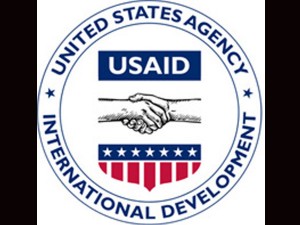US to hike aid to Mindanao
On the 50th anniversary on Nov. 3 of its involvement in the Philippines, the US Agency for International Development (Usaid) announced that it was focusing assistance on rebellion-torn Mindanao.
“Mindanao is still Usaid’s top priority because that’s where the need is greatest,” said Gloria D. Steele, the Filipino-American head of the agency in the Philippines, pointing to a region where literacy and maternal and child mortality rates are highest.
“We have been working in partnership with the administration of President Aquino. We’re making sure our programs will support the President’s priority projects, mainly poverty alleviation,” Steele told the Inquirer recently.
“That’s a big challenge. But if we all try, meaning with joint efforts by government and the private sector, we can make things happen. There are no guarantees, but the potential is there. With the right people working together and the availability of resources, I am optimistic we can make things happen,” she said.
In a report on its activities, Usaid said it has over 30 projects in the southern Philippines, including the Autonomous Region in Muslim Mindanao (ARMM).
“The programs give former combatants job skills and expand trade and marketing networks. Usaid is also training local officials in alternative dispute resolution mechanisms in more than 1,000 villages,” it said.
The agency said the incidence of violence had been reduced by 40 percent in areas supported by its development activities.
Between 1996 and 2009, the Usaid said it provided nearly $500 million to develop basic infrastructure in Mindanao, such as ports, roads and bridges, and assist rural banks in providing loans and deposit services to microenterprises.
In partnership with local governments and community organizations, the agency helped to “effectively manage natural resources, improve urban environmental management and use renewable energy systems supplied through public-private alliances.”
To combat corruption, Usaid said it was “supporting local officials by focusing on transparency and accountability in public administration processes at the local level.”
The agency is working with the private sector and LGUs (local government units) to “improve the delivery of family health services, including maternal and child health, voluntary family planning and control of tuberculosis, HIV-AIDS and emerging pandemic threats.”
Usaid is also “increasing access to quality education and livelihood skills in conflict-affected areas” by improving the quality of instruction, particularly in English, math and science, and vocational training opportunities for out-of-school youth.
In the ARMM, average scores in the National Achievement Tests have increased from a low 49 percent to 61 percent, Steele said.
During the past four years, Usaid’s budget allocation for the Philippines totaled nearly $400 million.
“Unfortunately, the Philippines has not enjoyed the same level of economic success as its neighbors have over the past 30 years,” it said, adding that “approximately 40 percent of the Philippines’ population lives on $2 a day or less.”
US Ambassador to the Philippines Harry Thomas Jr. is scheduled to join Usaid and Peace Corps officials in celebrating the two agencies’ “50 Years of Partnership for Peace and Development” program on Nov. 4 at the Mall of Asia’s Music Hall.
